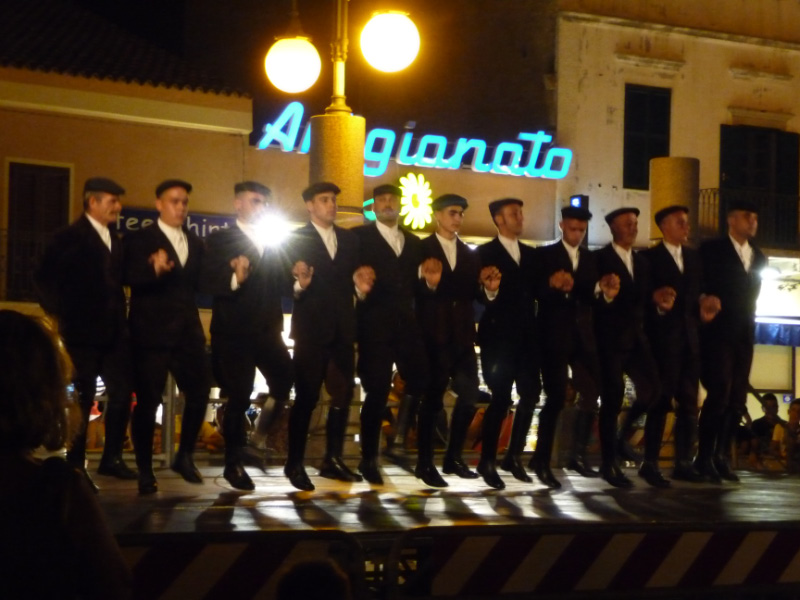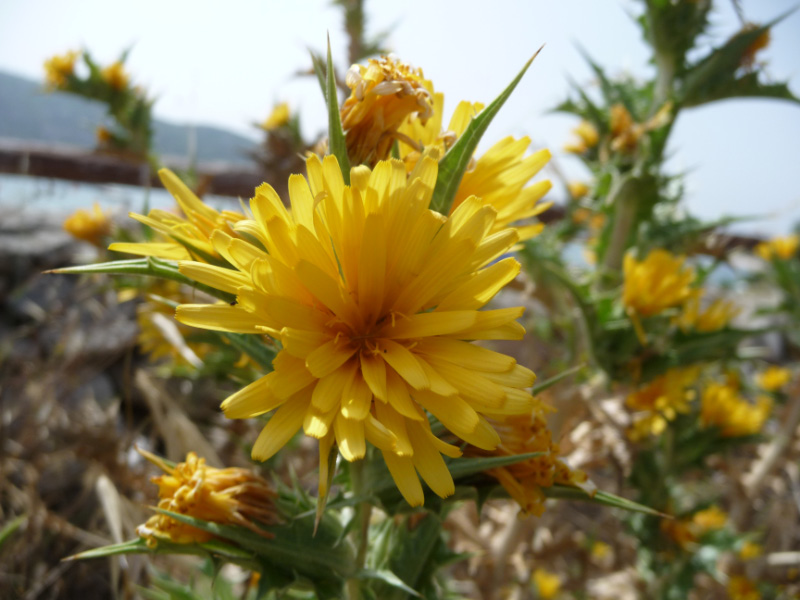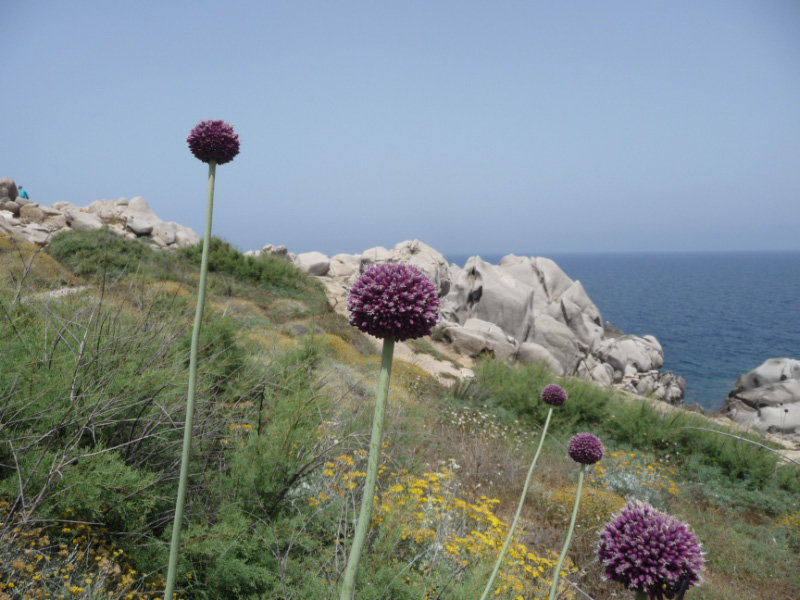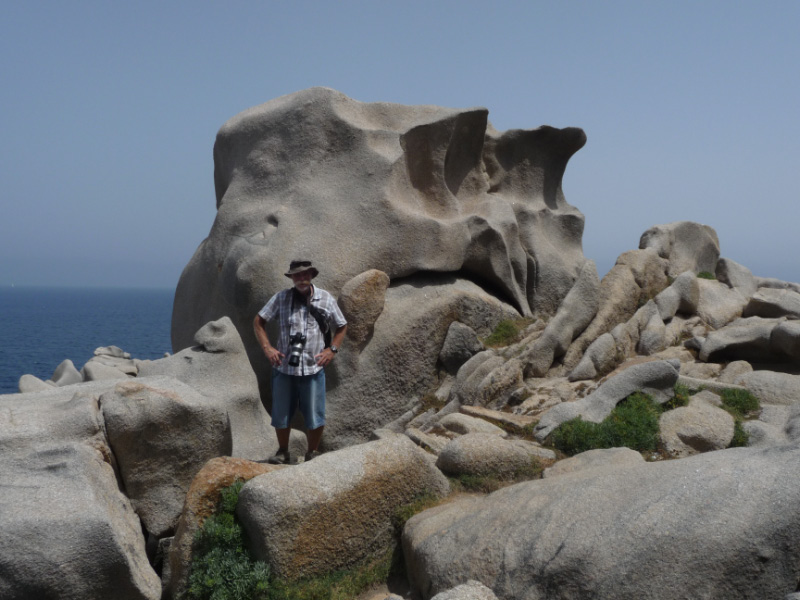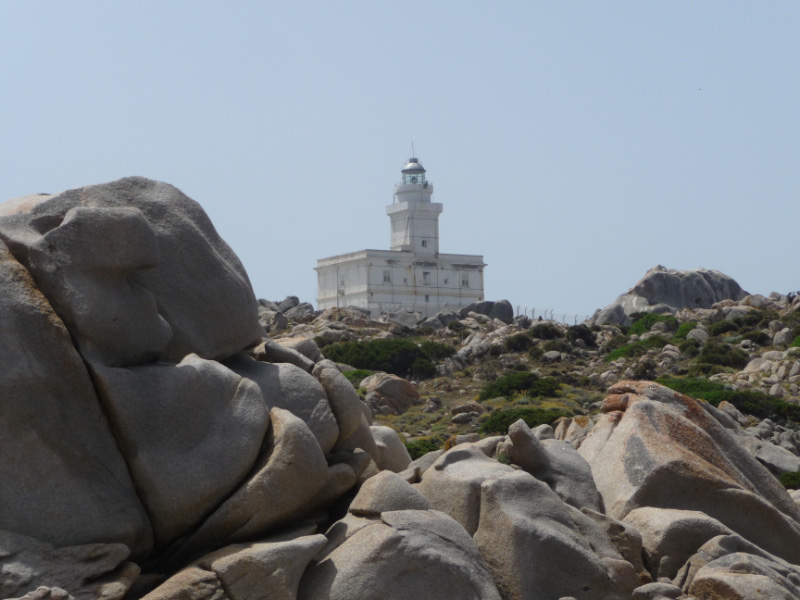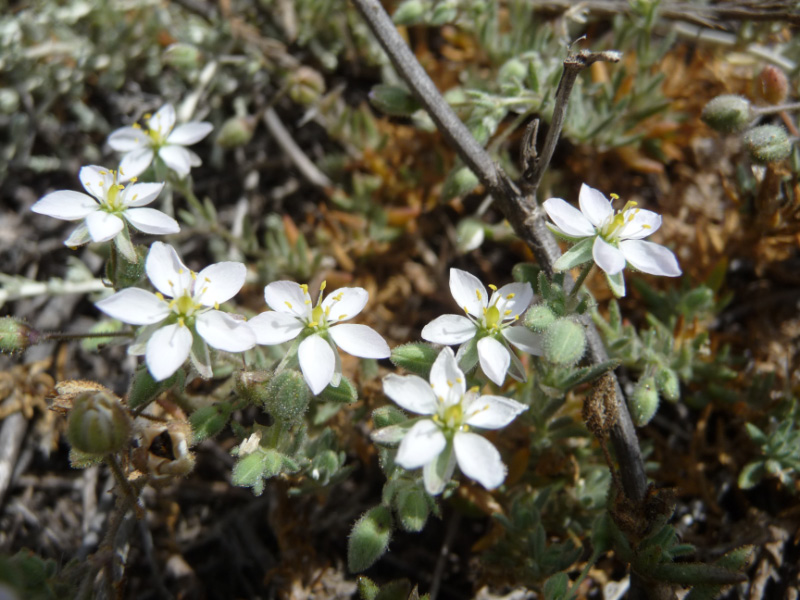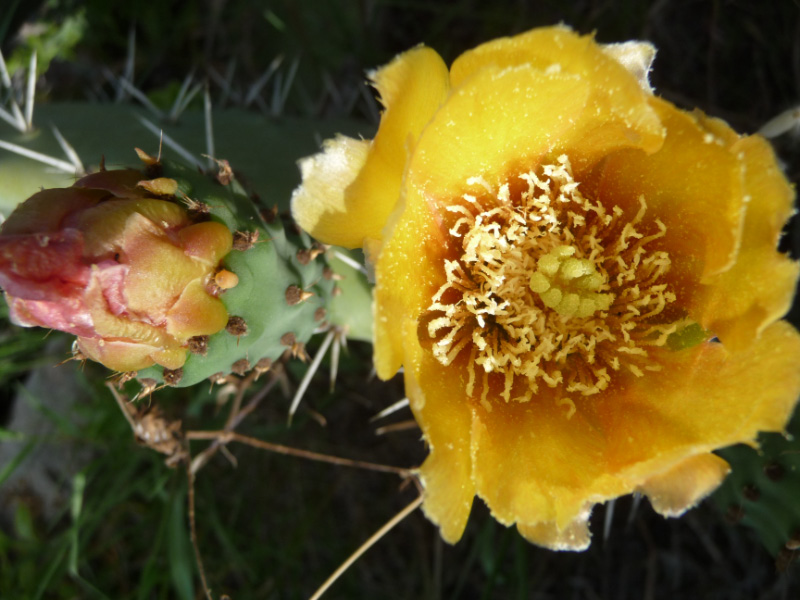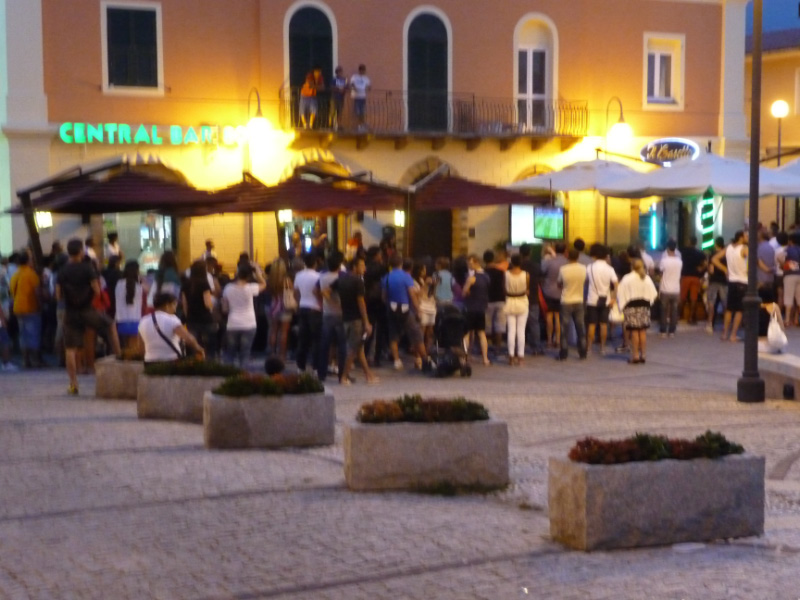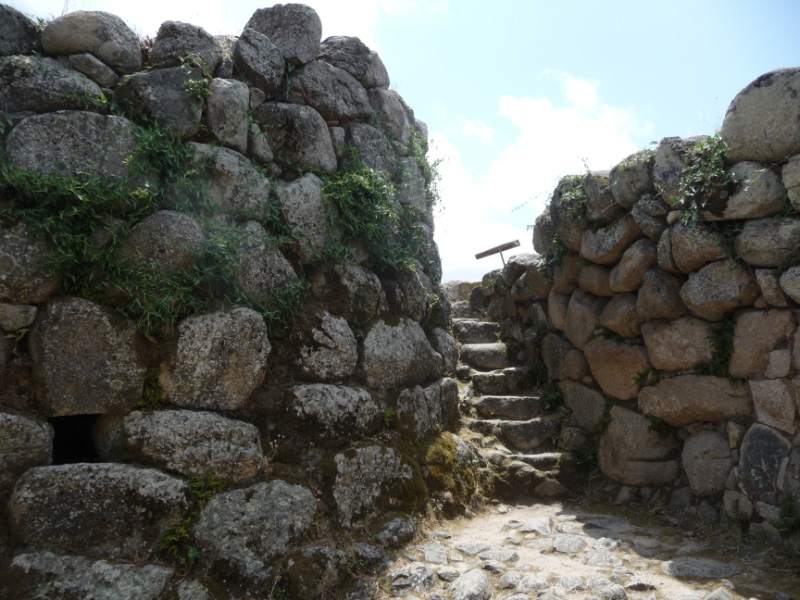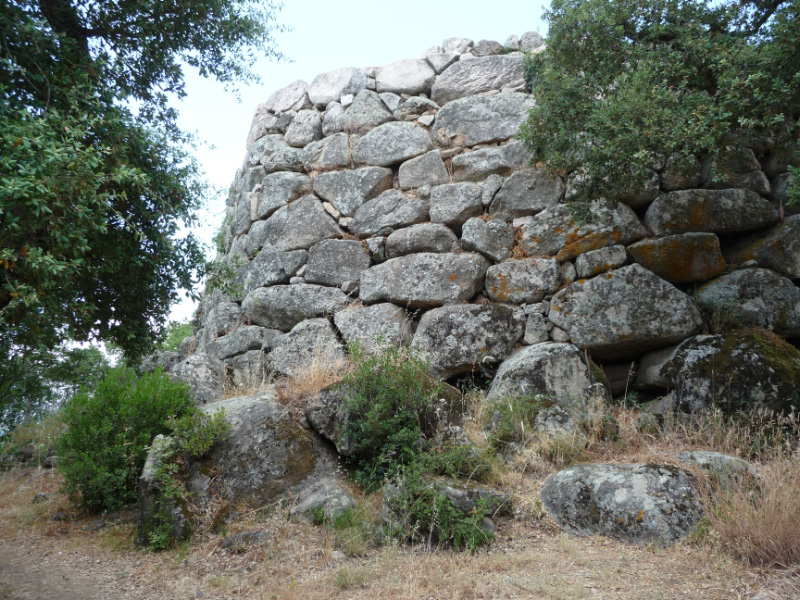From the sophisticated French lifestyle of Corsica, Santa Teresa appeared beautifully simple. The town has a tiny square with a couple of bars and a stage where we were lucky to watch some local dance. It was alive in the evening with families cooling off in the Italian heatwave that dominated the weather pattern during our time in Sardinia.
The following evening the square was also full, but excitement quickly turned to disappointment as Italy lost the European Cup to Spain in an embarrassing 4-0 score.
Food was good – lots of seafood and delicious granita de limone, but I totally mucked up and ordered a rosso (red wine). I should know better – rosé in France (especially Corsica) but not in Italy. But then again, why would you drink red wine when Campari is the aperitif of choice?
There is the stunning Capo Testo (cape) to the east which is preserved as a natural habitat. Unfortunately it is also a popular beach resort with a number of houses, but the rocks are beautiful as were the last of the spring flowers.
Sardinia and Corsica are cultures apart, but within spitting distance. It is easy to make out the white, chalky cliffs of Corsica from the most northern tower (Torre di Longonsordo).
We explored the area and the beautiful beaches just west of Santa Teresa. Yachts are smaller and families are “insiema” together.
As we left Santa Teresa we drove through the mountains. Not as dramatic as Corsica but beautiful. We stopped at the Nuraghe Majori to explore the amazing tower that was a lookout to protect the villages 3,700 years ago. There are 7,000 of these Nuraghe sites recorded in Sardinia, that is one every 3.5 sq km. They are a testament to the development of culture during the Bronze Age and ensured trade between Sardinia and many of her neighbours. There is some debate as to the influence of Cyprus and Crete on the development of metal in this period.
e_header.jpg)


